A ball of mass m collides horizontally with a stationary wedge on a rough horizontal surface, in the two orientations as shown. Neglect friction between ball and wedge. Two student comment on system of ball and wedge in thses situations
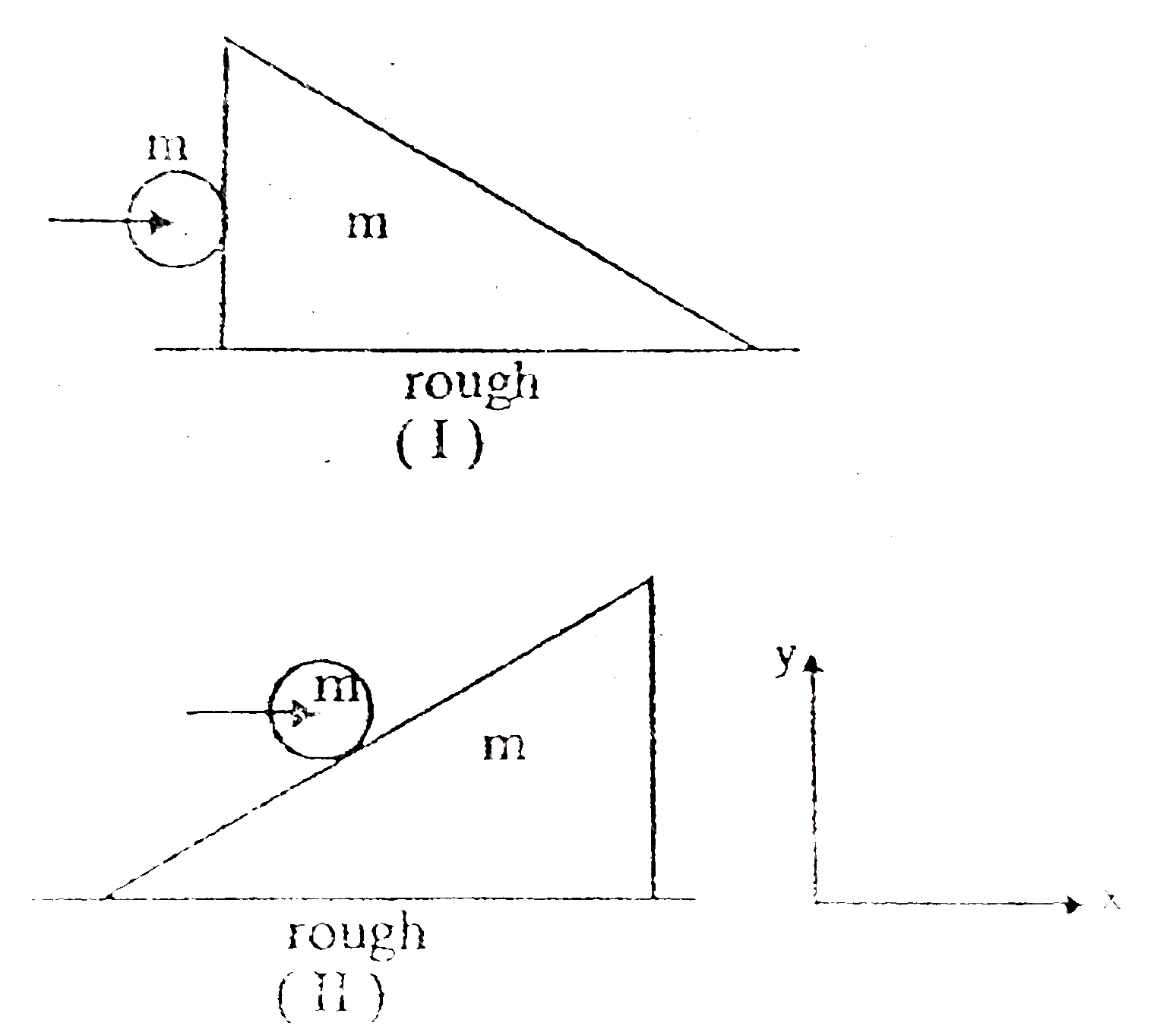
Saurav : Momentum of system in x−direction will change by significant amout in both cases. Rahul : There are no impulsive external forces ijn y−directions in both cases hence the total momentum of system in y-directions can be treated as conserved in both cases . Solution in Gujrati
Saurav is wrong and Rahul is correct
Saurav is correct and Rahul is wrong
Both are correct
Both are wrong
The correct Answer is:A
Step by step video & image solution for A ball of mass m collides horizontally with a stationary wedge on a rough horizontal surface, in the two orientations as shown. Neglect friction between ball and wedge. Two student comment on system of ball and wedge in thses situations Saurav : Momentum of system in x-direction will change by significant amout in both cases. Rahul : There are no impulsive external forces ijn y-directions in both cases hence the total momentum of system in y-directions can be treated as conserved in both cases . by Physics experts to help you in doubts & scoring excellent marks in Class 12 exams.
Updated on:21/07/2023Topper's Solved these Questions
- TEST PAPERBOOK - ALLEN CHAPTER - TEST PAPEREXERCISE - PHYSICS
4 Videos
- TEST PAPERBOOK - ALLEN CHAPTER - TEST PAPEREXERCISE - PHYSICS
4 Videos
- SIMPLE HARMONIC MOTIONBOOK - ALLEN CHAPTER - SIMPLE HARMONIC MOTIONEXERCISE - Example
1 Videos
- TEST PAPER 1BOOK - ALLEN CHAPTER - TEST PAPER 1EXERCISE - PHYSICS
11 Videos
Similar Questions
Choose the correct statement:
View SolutionChoose the correct statement:
View SolutionA rod with rectangular cross section oscillates about a horizontal axis passing through one of its ends and it behaves like a seconds pendulum, its length will be
View SolutionWhy are electric field lines perpendicular at a point on an equipotential surface of a conductor ?
View SolutionA ball of mass m moving horizotally which velocity u hits a wedge of mass M. The wedge is situated on a smooth horizontal source. If after striking with wedge the ball starts moving in vertical direction and the wedge starts moving in horizotal plane. calculate
a. the velocity of wedge V.
b. the velocity (v) at which the ball moves in vertical direction.
c. the impulse imparted by the ball on the wedge.
d. the coefficient of restitution e=?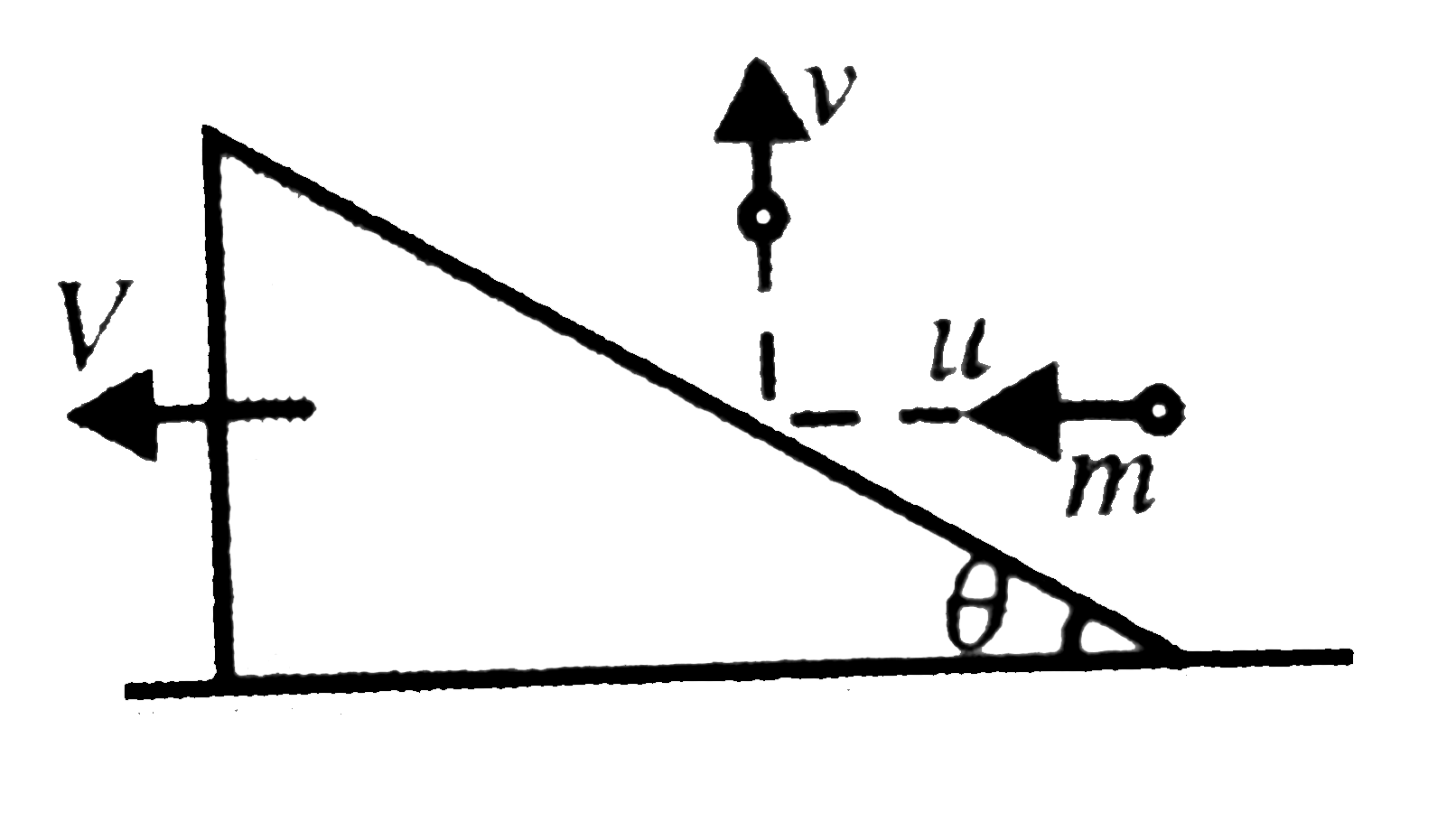
View SolutionA ball of mass m collides with a stationary wedge of mass M, perpendicular to its inclined face, inclined at an angle as shown in the figure. If the coefficient of restitution between the wedge and ball is e, calculate the ratio of modulus of velocity of the ball immediately after and before collision. Also calculate the velocity of wedge just after collision.
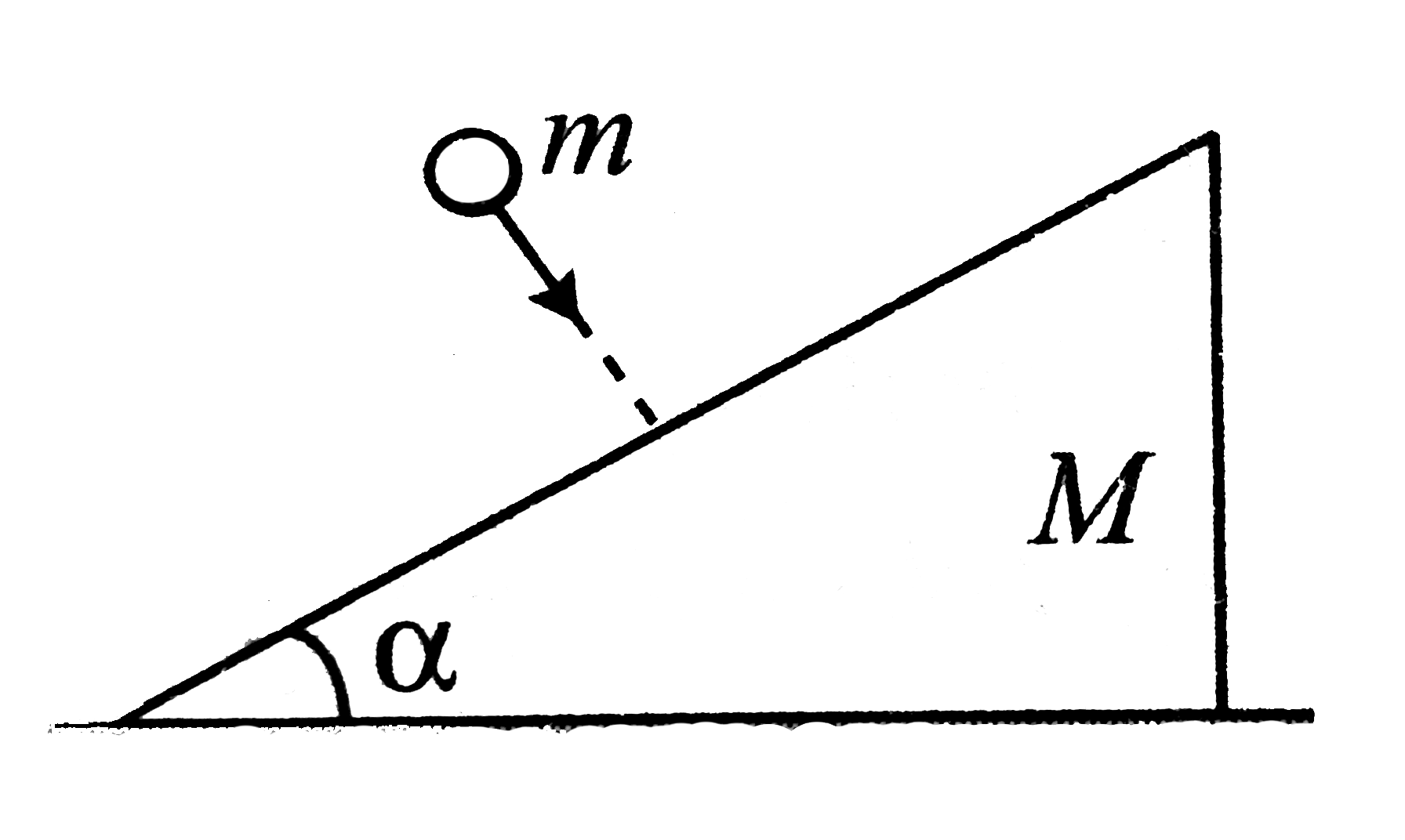
View SolutionA ball of mass in collides horizontally with a stationary wedge on a rough horizontal surface, in the two orientations as shown. Neglect friction between the ball and the wedge. The students comment on the system of ball and wedge in these situations Saurav: Momentum of the system in x -direction will change by significant amount in both the cases. Rahul: There are no impulsive external forces in x -direction in both cases, hence the total momentum of the system in x -direction can be treated as conserved in both cases.
View SolutionIn the given the wedge is acted upon by a constant horizontal force 'F'. The wedge is moving on a smooth horizontal surface A ball of mas 'm' is at rest relative to the wedge The ratio of forces exerted on 'm' by the wedge when 'F' is acting and 'F' is withdrawn assuming no friction between the edge and the ball is equal to .
View SolutionA wedge mass m rest on horizontal surface. The inclination of the wedge is α. A ball of mass m moving horizontal with speed u hits the inclined face of the wedge in elastically and after hitting slides up the inclined face of the wedge. Find the velocity of the wedge just after collision. Neglect any friction.
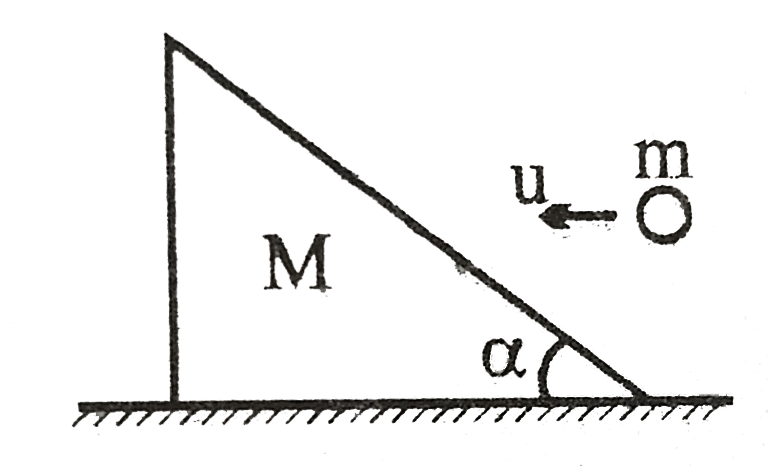
View SolutionA ball of mass m moving vertically down , collides with inclined surface of the wedge . After the collision , wedge starts moving in horizontal direction with velocity v0 . If all the surfaces are smooth then impulse applied by wedge on the ball during collision is given by
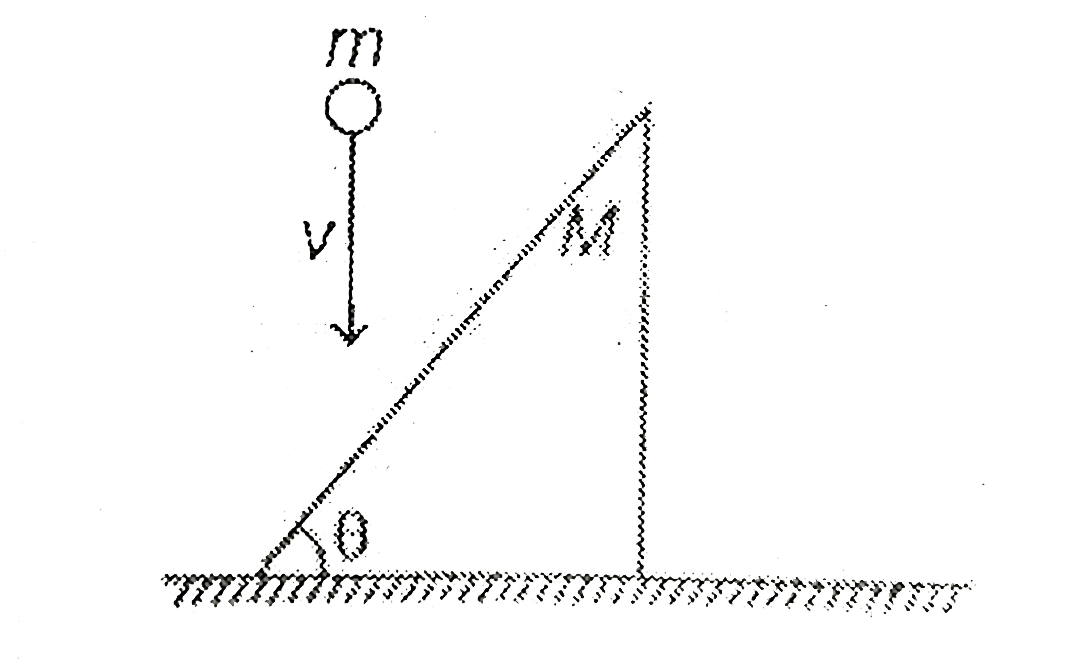
View SolutionA small block of mass m is kept on the inclined surface of a wedge of mass M. The inclined surface of the wedge makes an angle θ with the horizontal. The wedge is kept on a frictionless rigid horizontal floor. You can neglect friction between the block and the wedge also. An external agent applies a horizontal force F on the wedge.
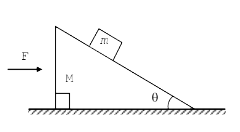
The value of the force F so that the wedge remains at rest is F1. Which of the options is incorrect?
View SolutionThe system shown is released from rest. Mass of ball is m kg and that of wedge is M kg respectively. When ball reaches at highest point on other side of the wedge, velocity of ball and wedge is (initially wedge is kept at rest against a wall and there is no friction anywhere) :
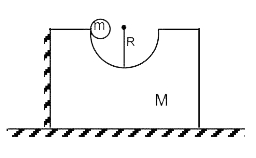
View SolutionA wedge of mass M resting on a horizontal frictionless surface is acted upon by a force F in the horizontal direction as shown in figure. Find the net horizontal force acting on the shaded portion of the wedge.
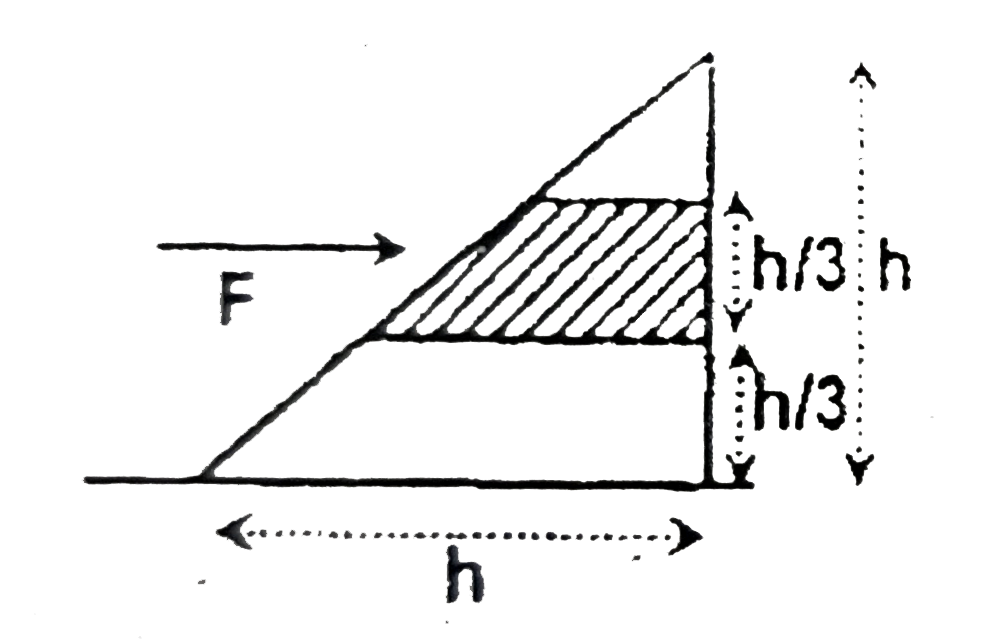
View SolutionIn the given figure, the wedge is acted upon by a constant horizontal force F. The wedge is moving on a smooth horizontal surface. A ball of mass 'm' is at rest relative to the wedge. The ratio of forces exerted on 'm' by the wedge when F is acting, and when F is withdrawn, assuming no friction between the wedge and the ball, the ratio is equal to
View SolutionIn the given figure, the wedge is acted upon by a constant horizontal force 'F'. The wedge is moving on a smooth horizontal surface. A ball of mass 'm' is at rest relative to the wedge. The ratio of forces exerted on 'm' by the wedge when 'F' is acting and 'F' is withdrawn assuming no friction between the edge and the ball, is equal to :
View SolutionA ball of mass m= 1 kg falling vertically with a velocity v_(0) = 2 m/s strikes a wedge of mass M = 2 kg kept on a smooth, horizontal surface as shown in figure The coefficient of restitution between the ball and the wedge is e = (1)/(2). Find the velocity of the wedge and the ball immediately after collision.
View Solution
